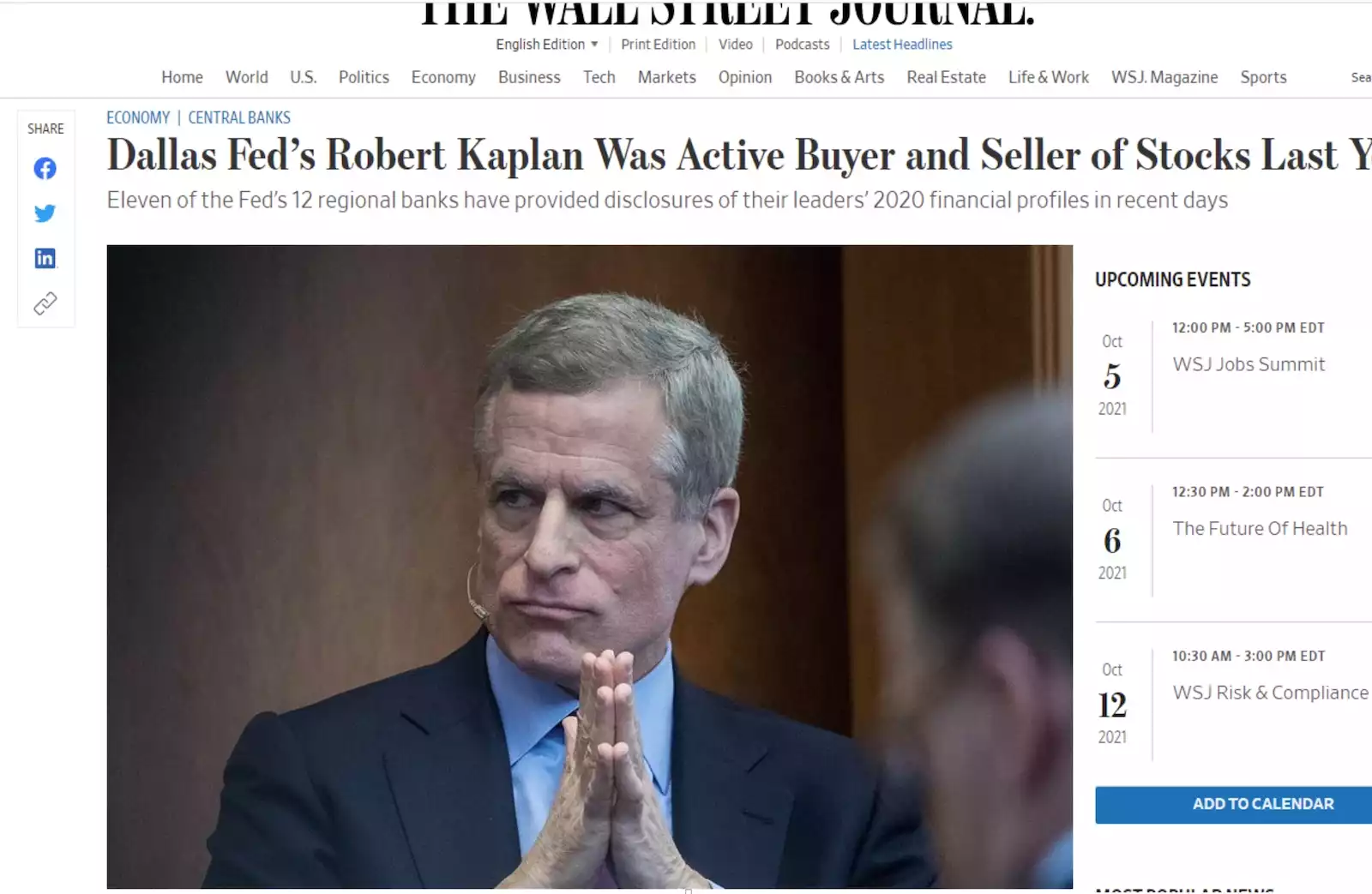Insider Trading at the Federal Reserve
News
|
Posted 29/09/2021
|
8122
Dallas Fed President Robert Kaplan and Boston Fed President Eric Rosengren have now resigned from their posts after being exposed by the Wall Street Journal for insider trading last week. Kaplan was found to have made major trades in companies such as Tesla, Amazon, Facebook and Johnson & Johnson.
No stranger to trading, Robert Kaplan, former president and CEO of the Federal Reserve Bank of Dallas, came to the Fed after a 23 year stint with Goldman Sachs group’s investment banking and investment management divisions. His disclosure showed major transactions (purchases and sales of over $US1mil) in 2020 of Johnson & Johnson, Amazon, Google, Facebook, TSLA and 18 others. What many of us wouldn’t give to be a fly on the wall in FOMC meetings where decisions to increase M2 money supply are being discussed.

Compatriot Rosengren invested in real estate trusts that dealt with the very mortgage backed bonds that have been bought up by the Fed aggressively in 2020. The U.S. central bank slashed interest rates to zero in March as the pandemic spread and began buying hundreds of billions of dollars-worth of Treasuries and mortgage-backed securities to calm financial markets. As an example, Rosengren’s 2020 disclosure shows both purchases and sales of Annaly Capital Management Inc., a REIT that holds mortgage back securities. These are the very MBS that the Fed are still buying monthly in it’s quantitative easing program.
While Fed Chair Jerome Powell argued that the trades of the two Fed Presidents were legal, they raised ethical questions that required further investigation. The Fed are the stewards of the economy with the power to move markets, inflate bigger and bigger bubbles, and occasionally pop them. Without a doubt, their decisions have a material impact on major sectors of not only the US indices, but global markets. That Fed Presidents are actively trading individual stocks in a deliberate way has come as a shock to many. Even a blind trust in the S&P would raise questions. If the Fed is supposed to be the one to ‘take away the punch bowl just as the party is getting started’, it is clearly a conflict of interest if voting members have a material interest in the stock market making new all-time-highs.
Since the GFC, the mainstream media has covered every slight nuance in FOMC meeting minutes. This is hardly surprising. If there is a group of decision makers that determine interest rates and the money supply, people would be crazy to not hang on to their every word. Evidently naively, the public and the media has paid no credence to the natural conflicts of interest of asking a group of highly motivated and powerful individuals to determine the money supply and interest rates.
Controversy has continued to swirl since the story broke on WSJ, and the news of the two Presidents ‘retiring’ in the last 24 hours shows how damaging this is for the image of arguable the most powerful organisation on the planet.
In announcing his resignation as of 8 October, Kaplan stated, “The Federal Reserve is approaching a critical point in our economic recovery as it deliberates the future path of monetary policy. Unfortunately, the recent focus on my financial disclosure risks becoming a distraction.”
Both Presidents have previously announced that they will be selling their stocks to ensure that there is no conflict of interest. They say ‘nobody rings a bell at the top of a market’. Depending on where stock markets go from here to the end of the year, the FOMC Presidents selling out of their positions has a certain ring to it.